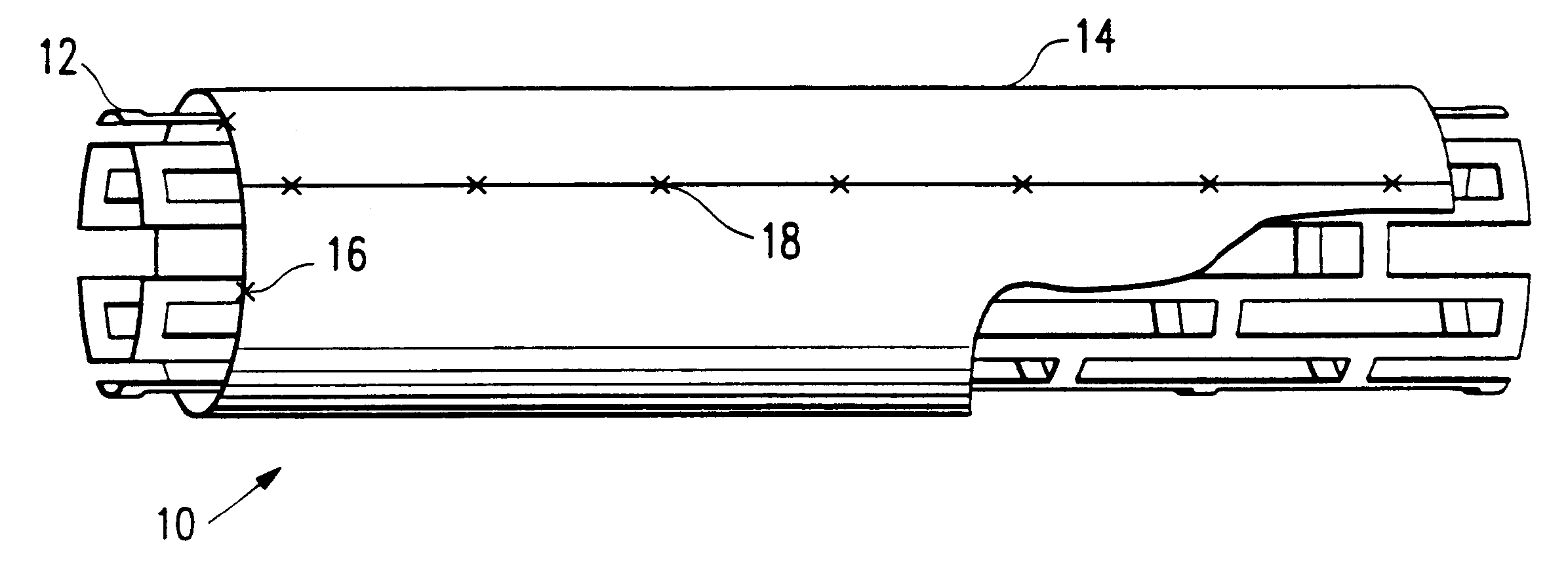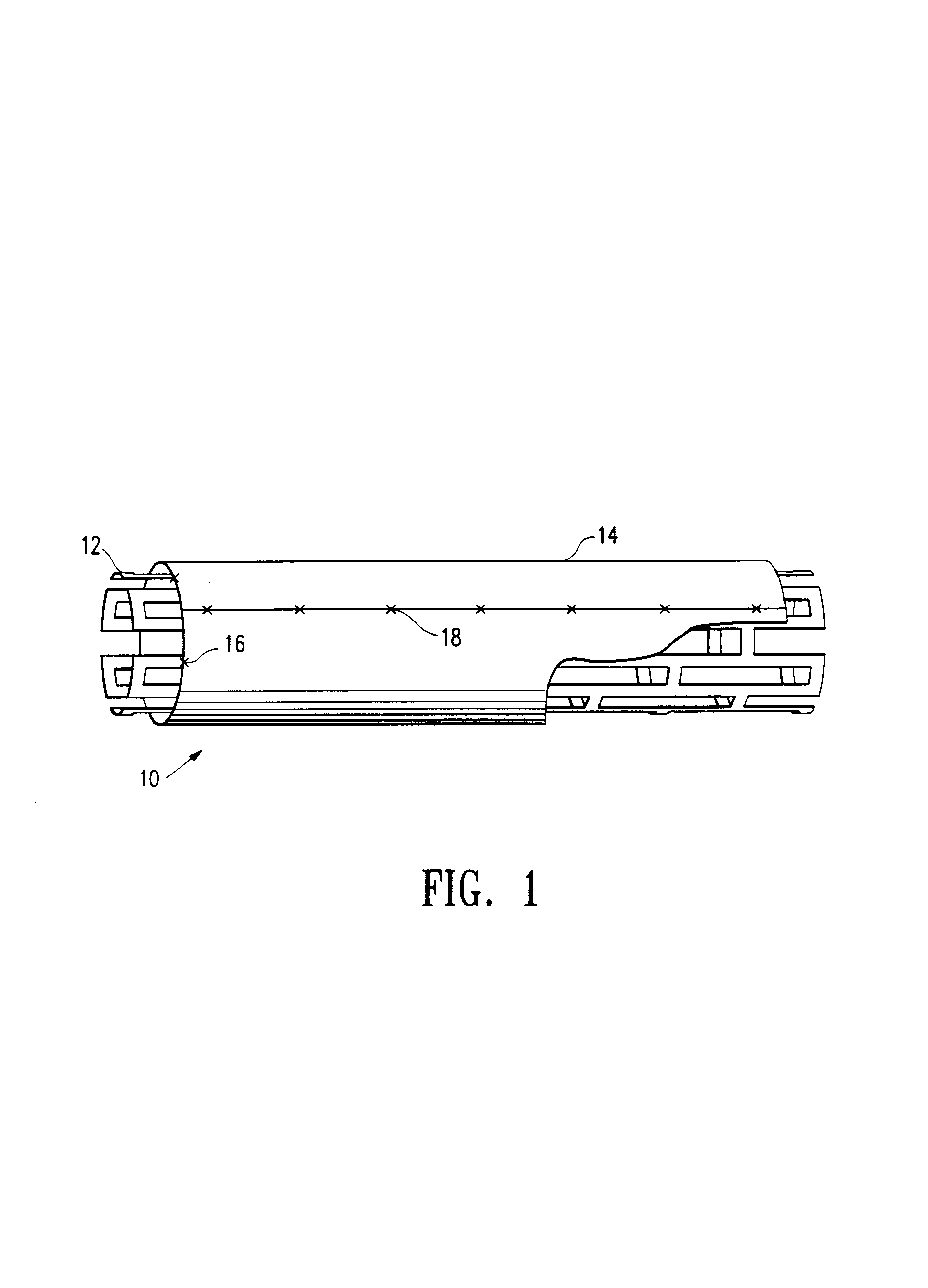Stent covered with heterologous tissue
a heterologous tissue and stent technology, applied in the field of expandable intraluminal support devices, can solve the problems of intimal hyperplasia that occludes the vessel, no particular effect, and low stenosis ra
- Summary
- Abstract
- Description
- Claims
- Application Information
AI Technical Summary
Benefits of technology
Problems solved by technology
Method used
Image
Examples
Embodiment Construction
[0010]As shown in FIG. 1, a stent assembly 10 of this invention generally comprises a tubular, expandable metallic framework forming the stent 12 positioned coaxially within a cylinder 14 of heterologous tissue. Preferably, metallic stent 12 extends about 1 mm beyond each end of cylinder 14 to prevent prolapse of the tissue into the lumen of the stent when it is expanded. Cylinder 14 may be secured to metallic framework 12 by any suitable means. For example, four radially spaced sutures 16 may be placed at each end of cylinder 14.
[0011]Cylinder 14 preferably comprises bovine pericardium, a material shown to resist suture line bleeding, require no pre-clotting, support endothelialization and have an excellent host-tissue response. Further, bovine pericardial tissue has an elasticity of up to about 30% which allows the tissue cylinder to conform to both the unexpanded and expanded configurations of the metallic framework without adding a great deal of bulk which increases the profile ...
PUM
 Login to View More
Login to View More Abstract
Description
Claims
Application Information
 Login to View More
Login to View More - R&D
- Intellectual Property
- Life Sciences
- Materials
- Tech Scout
- Unparalleled Data Quality
- Higher Quality Content
- 60% Fewer Hallucinations
Browse by: Latest US Patents, China's latest patents, Technical Efficacy Thesaurus, Application Domain, Technology Topic, Popular Technical Reports.
© 2025 PatSnap. All rights reserved.Legal|Privacy policy|Modern Slavery Act Transparency Statement|Sitemap|About US| Contact US: help@patsnap.com


